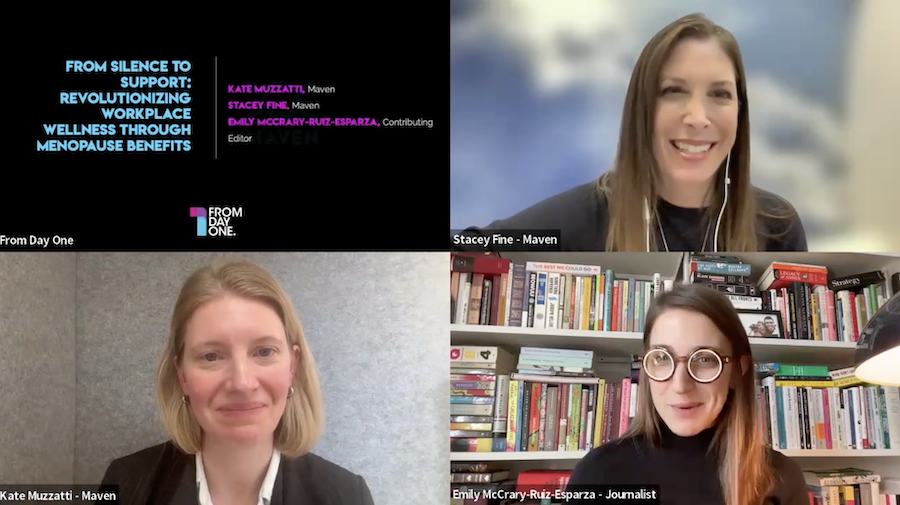Navigating the Future of Business With Resilience and Innovation
When Amy Letke, national practice leader, HR consulting at Marsh McLennan Agency talks about innovative HR strategy, she points to one of her clients as a perfect example. This company has a workplace with harsh conditions that most of us would find unattractive. It’s a meatpacking company where employees often find themselves working in below-freezing temperatures and less-than-competitive pay. Yet its attrition rate is remarkably low.The client told her, “We’ve invested in our people, we’ve conducted leadership training, we’ve had to reorganize. We’ve [also] had to go back to our leaders and say, ‘You’ve got to like your people, to talk to them, and be compassionate to their needs.’” Letke shared this story in a thought leadership spotlight at From Day One’s D.C. event. By offering a holistic benefits package and engaging not just the employees, but also their families with a welcoming company culture, this organization convinced workers not only to stay, but to thrive in a very tough job.In a dynamic business environment, adaptation is essential to stay competitive. Organizations face unprecedented challenges and opportunities, demanding a blend of resilience and innovation. Letke offered an enlightening presentation on how to navigate and excel in this landscape, with insights, strategies, and actionable advice to thrive amid evolving industry trends.Workplace Challenges in 2024Letke says employers face three major challenges this year, each of which offers opportunities to be more effective with your HR benefits strategy. First, is attracting and retaining talent. The second, she says, is getting more done with less. And finally, the third is the rapid technological advancement happening.Covid prepared HR teams to deal with rapidly changing circumstances, she says. “HR teams have to be resilient. And we always are renewing and invigorating ourselves.” She offers several hallmarks of a resilient HR structure, including a coaching for leaders, a handbook that addresses time off and other work policies, up-to-date job descriptions, and a readiness to handle tough conversations, among others. By consistently analyzing your infrastructure and making sure the latest trends and policies are incorporated, you can stay ahead of any challenges coming down the line.Creating an Effective StrategyIn addition to staying on top of trends and keeping HR infrastructure updated, it’s also about attitude and company culture. “When we become a leader, we’ve got to realize what we’re signing up for,” Letke said. “It means we have to be compassionate, caring, [and] we have to listen.” This sometimes requires training, she says.Amy Letke, National Practice Leader, HR Consulting at Marsh McLennan Agency led the thought leadership spotlight in D.C.Resilient infrastructure can create a resilient culture with exceptional supervisors. These leaders give the frontline workforce the support that they need and can often make an organization more attractive even when the pay is not as competitive due to budget cuts in a challenging economy. It also means that leaders should be held accountable for employee turnover, as their attitude and care should be driving the culture that inspires retention and loyalty.Workers satisfied with every element of the employee experience are happier and feel more successful, appreciated, and have a greater sense of belonging, Letke says. These elements include pay and compensation, purposeful work, culture, and flexibility. “This list shows how we as leaders can deliver care throughout our organization,” Letke said, and should be a guiding principle behind HR strategy.Having an Effective Benefits Strategy“Offering good employee benefits is just basic, everybody expects it,” Letke said, especially post-pandemic. So she encourages leaders to be more creative with their benefits strategy in order to stay competitive. A recent Marsh McLennan study showed that one in three employees would forgo a pay increase in return for additional well-being offerings for themselves and their families. “Being able to support your employees’ well-being is something we are seeing as an emerging trend, so thinking about those benefits is a way you can differentiate your company from others,” she said.Letke identifies four key areas of focus as opportunities to be more effective with your benefits strategy:Personalization: Give employees choices.Segmentation: Understand the different segments of employees and their needs. Centralization: To curb spending, there will likely be a centralization of tech platforms and human support options for HR teams. Empathy: Be there for your employees.A comprehensive benefits program incorporates the needs of every generation in the workforce, whose needs can look quite different. For example, Gen X might want remote work, flexible scheduling, caregiving benefits, and retirement planning, while Gen Z might prioritize student loan repayment, financial planning assistance, and training and development.Many workplaces have multiple generations represented among the workforce, so “managing to the needs of these generations is critical,” Letke said.Ultimately, HR success is about cultivating a mindset of innovation, Letke says. If HR has become a “check the box” compliance function, you’re doing it wrong. “Our job is to lead, inspire, and help others understand the impact they can make on the employee experience,” Letke said.Intention, compassion, and empathy is how winning organizations do it. A holistic approach to leadership that includes every element of an employees’ experience – both at work and at home – can make for a sustainable, forward-thinking, and highly attractive workplace.Editor's note: From Day One thanks our partner, Marsh McLennan Agency, for sponsoring this thought leadership spotlight. Katie Chambers is a freelance writer and award-winning communications executive with a lifelong commitment to supporting artists and advocating for inclusion. Her work has been seen in HuffPost and several printed essay collections, among others, and she has appeared on Cheddar News, iWomanTV, and CBS New York.





